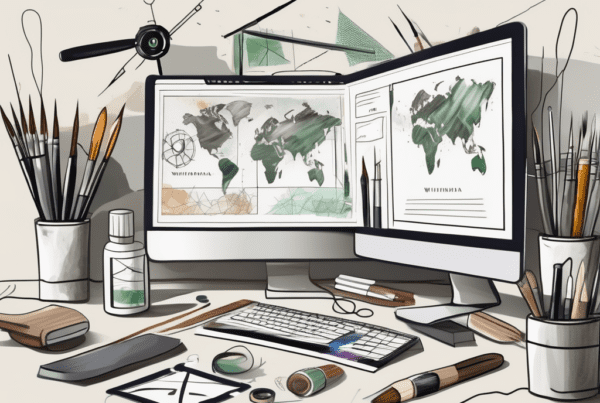
In the modern day, where information is consumed at an astonishing rate, it is essential to understand the various types of media that surround us. This comprehensive study aims to delve into the world of media, exploring its different forms and their impact on society. By investigating traditional media, print media, broadcast media, digital media, social media, interactive media, and alternative media, we can gain a deeper understanding of the role and influence of each type. Let’s embark on this journey and unravel the complexities of media together.
Introduction
Media is a powerful tool that shapes public opinion, disseminates news, and creates connections among people globally. It encompasses a vast range of platforms, each with its own unique characteristics and corresponding effects on individuals and society as a whole.
In today’s digital age, media has become an integral part of our daily lives. From the moment we wake up in the morning to the time we go to bed at night, we are constantly surrounded by various forms of media. Whether it’s checking our smartphones for the latest news updates, scrolling through social media feeds, or watching television shows and movies, media has become deeply intertwined with our existence.
One of the most significant aspects of media is its ability to shape public opinion. Through newspapers, magazines, and online news portals, information is disseminated to a wide audience, influencing their thoughts, beliefs, and attitudes. Media has the power to sway public opinion on important social and political issues, often playing a crucial role in shaping the outcome of elections and public debates.
Furthermore, media serves as a platform for individuals to express their opinions and share their experiences. Social media platforms like Facebook, Twitter, and Instagram have given rise to a new era of citizen journalism, where ordinary people can report news and share their perspectives on various topics. This democratization of media has empowered individuals to have a voice and participate in public discourse like never before.
However, media is not without its drawbacks. The rise of fake news and misinformation has become a major concern in recent years. With the ease of sharing information on social media, false narratives and conspiracy theories can quickly spread, leading to confusion and mistrust among the public. It is crucial for media consumers to be critical and discerning, verifying the credibility of sources and fact-checking information before accepting it as truth.
Moreover, the influence of media extends beyond shaping public opinion. It also plays a significant role in shaping cultural norms and values. Through television shows, movies, and advertisements, media influences our perceptions of beauty, gender roles, and societal expectations. It can reinforce stereotypes or challenge them, leading to important discussions and debates about representation and inclusivity.
Lastly, media has the power to connect people from different parts of the world. Social media platforms have made it easier than ever to interact with individuals from different cultures and backgrounds. We can now engage in conversations, share ideas, and learn from people who we may have never met otherwise. This interconnectedness has the potential to foster empathy, understanding, and global cooperation.
In conclusion, media is a powerful tool that shapes public opinion, disseminates news, and creates connections among people globally. Its influence is far-reaching, impacting our thoughts, beliefs, and behaviors. As media continues to evolve and adapt to new technologies, it is essential for us to critically engage with it, ensuring that we are informed consumers and active participants in the media landscape.
What Is Media?
Before we dive into the specifics of media types, let’s first establish what exactly media is. Media refers to the different channels through which information and entertainment are communicated to the masses. These channels can take the form of print, audio, visual, or interactive mediums, and their purpose is to engage with and inform their respective audiences.
Print media, one of the oldest forms of media, includes newspapers, magazines, and books. These printed materials have been a staple in society for centuries, providing a tangible and portable way to disseminate information. From the early days of the printing press to the modern digital era, print media has evolved to adapt to changing technologies and audience preferences.
Audio media encompasses various forms of sound-based communication. This includes radio broadcasts, podcasts, and music streaming platforms. With the ability to convey messages through sound, audio media allows for storytelling, news reporting, and the enjoyment of music and spoken word content. From the crackling of vinyl records to the seamless streaming of digital audio, this medium has undergone significant transformations over time.
Visual media, on the other hand, relies on images and visuals to convey information and evoke emotions. This category includes television, movies, photography, and even art installations. Visual media has the power to transport viewers to different worlds, provoke thought, and capture moments in time. From the grainy black and white images of early film to the high-definition screens of today, visual media has continuously pushed the boundaries of technology and creativity.
Interactive media is a relatively newer form of media that has gained popularity with the rise of the internet and digital technologies. It allows users to actively engage with the content, rather than passively consuming it. Examples of interactive media include websites, video games, virtual reality experiences, and social media platforms. This form of media has revolutionized the way we interact with information and each other, offering endless possibilities for communication and entertainment.
As technology continues to advance, media will undoubtedly continue to evolve and expand. New forms of media will emerge, and existing ones will undergo further transformations. The future of media holds exciting possibilities, with advancements in artificial intelligence, augmented reality, and immersive storytelling on the horizon. The ways in which we consume and engage with media will continue to shape our society and culture, influencing how we connect, learn, and entertain ourselves.
Traditional Media
Before the advent of digital technology, traditional media served as the primary source of information and entertainment. Traditional media encompasses mediums such as newspapers, magazines, radio, and television. These platforms have a rich history, deeply rooted in our society, and have played a significant role in shaping public discourse and opinions.
Print Media
Print media, including newspapers and magazines, represents one of the oldest forms of mass communication. These publications have stood the test of time and continue to be a reliable source of news and analysis. With their extensive coverage of local and global events, print media has been instrumental in exposing societal issues and promoting democratic values.
Broadcast Media
Broadcast media, comprising radio and television, revolutionized the way information is disseminated. With their ability to reach large audiences simultaneously, these mediums have become an integral part of our daily lives. From the early days of radio broadcasts to the rise of television networks, broadcast media has united people through the shared experience of news, entertainment, and cultural events.
Digital Media
In recent years, the advent of digital technology has transformed the media landscape. Digital media refers to the content and information that is transmitted through computer networks and the internet. This form of media has revolutionized the way we access and consume news, entertainment, and other forms of content.
Social Media
Social media platforms have emerged as a dominant force in the digital age. They provide individuals with the ability to connect, share, and engage with others on a global scale. From Facebook to Instagram, Twitter to LinkedIn, social media platforms have transformed communication, enabling people to voice their opinions, mobilize communities, and even challenge traditional media outlets.
Interactive Media
Interactive media, characterized by its ability to engage users and encourage participation, has gained significant popularity in recent years. This form of media encompasses video games, interactive websites, and mobile applications that offer immersive experiences. Interactive media blurs the line between audience and creator, allowing individuals to actively shape their own narrative and explore new avenues of storytelling.
Alternative Media
While traditional and digital media dominate the mainstream, alternative media provides platforms for marginalized voices and unconventional perspectives. Alternative media challenges the status quo, questioning existing power dynamics and amplifying the voices of underrepresented communities. From grassroots publications to community radio stations, alternative media plays a crucial role in diversifying the media landscape.
Conclusion
As we conclude our comprehensive study of media types, it becomes evident that each form of media carries its own significance and influence. Traditional media has deep roots in our society, while digital media has reshaped the way we consume information. Social and interactive media have given us new ways to engage and connect, while alternative media serves as a catalyst for change. By understanding the different media types and their effects, we can navigate the complex media landscape with greater awareness and critical thinking.
Investigating media types is an ongoing journey, as new platforms and technologies continue to emerge. By staying informed and engaging with media in a conscientious manner, we can harness its power for positive change in our evolving society.


